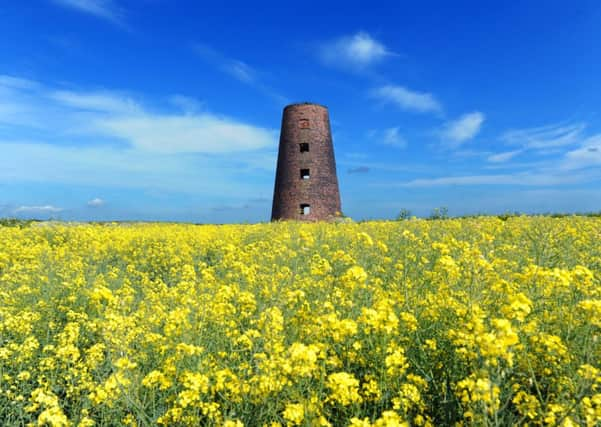Picture Post: Former windmill that inspired artist Karl Wood


The windmill, which lies between the road and the railway line, was built some time between 1818 and 1828 and was the replacement for a much earlier mill nearby.
It ground corn for more than a century, but the business came to a sharp halt during the Second World War, when its machinery was commandeered by the military for the war effort. No workers ever returned to the four storey mill after the war and it now lends an eerie presence to the surrounding landscape.
Advertisement
Hide AdAdvertisement
Hide AdShortly after its closure, the building provided inspiration for the windmill artist Karl Wood, who painted the empty shell in 1934.
Having been born in Derbyshire, Wood moved to Lincolnshire where he was art master at Gainsborough Grammar School.
He ran his own art studio and gave private tuition not just in painting, but also piano and singing lessons. He completed his first painting of a windmill in 1928 and it seemed once he had started he couldn’t stop.
Wood cut a slightly eccentric figure travelling around the country on his bicycle, his paintbrushes strapped to the back along with his sketchpad, thermos flask, shaving brush and cycle repair kit. Consulting Ordnance Survey maps, his route was carefully plotted in his diaries and by 1933 he had clocked up 28,000 miles visiting 450 windmills. Sometimes he camped, but on the odd occasion he would offer to paint a person’s house or dog in return for a bed.
Advertisement
Hide AdAdvertisement
Hide AdBy 1956 he had a collection of windmill drawings and paintings which was 1,394 strong, but that was not enough for Wood who was determined to paint all 1,650 of the country’s windmills. He had intended to publish a book called the The Twilight of the Mills based on his extensive travels, but life got in the way and the project was never realised.
Wood contracted tuberculosis in 1957 and he died in Pluscarden Priory in Scotland on the morning of January 10, 1958 just after he had been given Holy Communion.
Technical details: Nikon D3s, 24-70 mm lens, 1/500th sec @ f8. ISO 100.